

Most Common Ways Your Yamaha Outboard Engine Will Break Down
Have you noticed your Yamaha outboard motor not running at full power? Or, maybe it won’t start up at all?
Chances are it is caused by a common problem. Often, the solution is a simple replacement of Yamaha parts that can be performed in minutes.

To help you troubleshoot any potential issues, let’s look at some of the most common ways your Yamaha outboard will break down and how to fix these issues.
Failure to Perform Regular Maintenance
Over the years, we’ve heard some boat owners ask “Why are boats so unreliable?” The truth is, Yamaha outboards are incredibly reliable but require regular maintenance to stay reliable. This maintenance must occur at recommended service intervals.
Boater owners committed to regular maintenance will also often ask, “How many hours will a Yamaha outboard last?” While Yamaha makes a diverse line of outboard motors, most models will last 1,500 - 3,000 hours depending on how often it is maintained, stored, and used. Considering that the average boater racks up 50 hours of usage per season, owners can expect many years of use. This said, we commonly hear of Yamaha motors lasting well beyond 3,000 hours.
Performing routine maintenance at the recommended intervals prevents many problems and significantly contributes to engine life and performance.
Fuel System Issues
One of the most common ways your Yamaha outboard motor will break down is a fuel system failure. Whether you’re experiencing an intermittent bog down, poor performance, or complete engine failure, your fuel system is a common culprit.
- Ethanol gasoline: Only use premium low-ethanol gasoline for your Yamaha outboard motor. The reason is that ethanol attracts water, causing fuel to dilute through “phase separation.” Additionally, ethanol gasoline can also gunk up fuel lines and fuel system components due to additives used. To help prevent these issues, regularly use a high-quality fuel stabilizer.
- Fuel lines: Check your fuel lines. If you discover any breaks or leaks, you should stop using the engine and make any necessary replacements. Also, take a look at any fuel hoses with an interior liner.
- Fuel filters: The fuel filter is designed to catch any debris and contaminants that have entered your fuel system. Regularly replace your fuel filters to keep fuel running freely.
- Fuel pump: A malfunctioning fuel pump can significantly reduce engine performance and, over time, severely damage other components. If your fuel pump is not working correctly, replace it and any hoses that may have been affected.
Dry Starting a Yamaha Outboard
A common mistake newer boat owners make is that they dry start their Yamaha outboard motor. A continually flowing water supply cools an outboard engine—without a supply of water to cool it, an outboard motor will overheat. Additionally, the impeller, which is lubricated by the water, will begin to warp due to the heat and friction, further exacerbating the problem.
To fix this problem, check your impeller. If the impeller is misshapen, you will need to replace it. Replacement is a simple fix for most amateur mechanics, but pay attention to any other issues that may have resulted from the dry start. Dry starting can cause serious engine issues and may require a rebuild by a licensed mechanic to restore it to working condition.
Shifting When the Engine Isn’t Running
Yamaha outboard motors need to be running when switching gears. If your Yamaha outboard has cable controls for the throttle (versus electronic controls), you may experience some issues if you shift in and out of gear when the engine isn’t running. This will require some adjustments to the cable or may damage the clutch dog, causing a severe engine malfunction or failure if left unaddressed.
Electrical System
Your outboard’s electrical system may be responsible for your boat not starting or experiencing intermittent performance issues.
As covered in PartsVu’s Yamaha outboard troubleshooting guide, you’ll first want to start by testing each part of the electrical system:
- First, make sure your kill switch is firmly attached.
- Next, for electric-starting models, you’ll want to check the main fuse to confirm it’s not blown. If you find that the connection at the center of the fuse is broken, you will need to replace it with one of the same amperage.
- After verifying the fuse, check the battery. Safely disconnect the negative cable followed by the positive cable before removing the battery from its housing. With a wire-bristle brush, carefully scrape away any corrosion on the battery terminals. If the battery is damaged, you’ll need to replace it. If it is in good condition and shows no signs of damage, you can proceed to charge it. When it’s completely charged, reinstall the battery and cables (positive cable first, then negative).
- Now that you have a working battery, the electrical system may be hampered by bad spark plugs. Carefully remove them with a spark plug wrench so you can inspect them. If you see signs of damage such as cracks, burns, fouling, or corrosion, replace them with the type of spark plug specified in your Yamaha owner’s manual - as well as the spark plug wires.
Excessive Vibration
Another common issue for Yamaha outboard motors is vibration. If you’re experiencing excessive vibration, the most likely cause is a damaged propeller. Should you find any damage (such as bent blades), you’ll need to either have the damage repaired or replace the propeller.
If there’s no damage during the visual inspection, the next step is to remove any debris that might have become entangled in the propeller - fishing line and seaweed are commonly to blame. To be thorough, take off the propeller and look for any material gathered around the propeller shaft. While there may be no debris, the shaft may be damaged and need replacement. Last, and for good measure, tighten the motor mounting bolt and the steering pivot with a wrench.
Once your propeller is back in place, restart the engine to see if the vibration has stopped. If not, you may want to have it professionally serviced by a mechanic to identify other issues.
Not Honoring Break-In Period
Did you know that your Yamaha outboard engine needs to be broken in when it is new or rebuilt? Many boat owners overlook the importance of the break-in period. However, Yamaha outboard motors need to be broken in to allow the internal engine components to correctly seat.
There are a few reasons why breaking in a Yamaha outboard motor is necessary:
- Preventing premature component wear and failure due to poor seating and misalignment
- Maximizing compression
- Controlling oil consumption
- Enabling the engine to produce consistent horsepower
Now that you have an understanding of the most common ways your Yamaha outboard engine will break down, it’s time to get to work - and PartsVu.com is here to help. Offering over 40,000 OEM Yamaha parts and supplies, PartsVu carries everything you need to maintain, inspect, and repair your outboard motor. Shop for your parts today!
This content was designed to serve as a general guide. Persons who are not familiar with marine engine repair and who have not been trained in the recommended servicing or installation procedures should have the work performed by an authorized marine mechanic. Improper installation or servicing of parts can result in engine or boat damage, personal injury to the installer, or harm to persons operating the product.

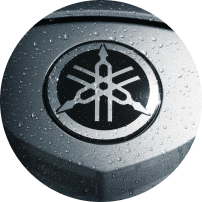

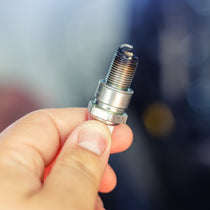
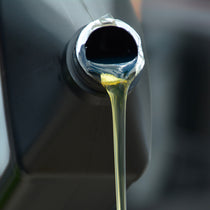
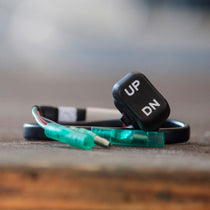

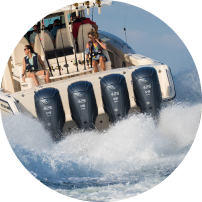

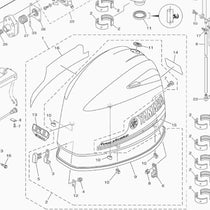











25 comments
I have a 2014 Yamaha 250 4 stroke with 700 hrs. Runs great, except yesterday it shut off at 3600 RPM’s while cruising. Restarted, no problems, ran fine. Leter in day, it did the same thing. restarted, ran fine again. Seems like electrical issue. Anyone else seen this ? Not sure what to check.
I have a 2014 Yamaha 250 4 stroke with 700 hrs. Runs great, except yesterday it shut off at 3600 RPM’s while cruising. Restarted, no problems, ran fine. Leter in day, it did the same thing. restarted, ran fine again. Seems like electrical issue. Anyone else seen this ? Not sure what to check.
[…] Quote from the source: … […]
With Yamaha Outboard Dealers it is very simple, we provide outboard motors that meet the demands of all boaters, big or small. Whether you are looking for a small portable outboard or an offshore motor Yamaha can provide the perfect match. When purchasing a Yamaha Outboard you can expect three things – Reliability, Performance and Innovation. Yamaha Outboards is the proud recipient of countless awards in the Marine Industry. For you that translates into countless hours of enjoyment on the water, greatly increased fuel efficiency and lower outboard operational cost. Yamaha Outboards – A never ending pursuit to better boating.
We understand your expectations of Yamaha Outboard Motors are very simple. When you turn the key she starts and is ready to go. Once you hit the throttles she gets you up to speed quickly and keeps running from dock to destination. And that is exactly what Yamaha Outboard Motors deliver, Reliable Outboard Performance. Since the 1980’s Yamaha Outboard Dealers have been proudly serving the U.S. market and relentlessly pushing innovation and efficiency of outboard motors…keeping them ahead of the game. With a focus on efficiency and reliability Yamaha Outboard Motors can lower operational cost and give you more time to spend on the water.
At Aspire Motor Services Marine, we are happy to serve you where ever you are located – if you have motor needs we have solutions! We offer a full line of Yamaha outboard motors for sale. You’ll also find that our outboard motor prices are extremely competitive…and don’t forget, we do not charge Sales Tax.
Contact us at (aspiremotors08@gmail.com)
Good Morning Every one!!
We are dealers of Brand new and Used Yamaha Outboard Motor Engine, From the range of 15HP-350HP.
We offer reasonable prices and safety of item guaranteed.
For more information on our product, kindly contact us at (aspiremotors08@gmail.com) and we shall get back to you swiftly.